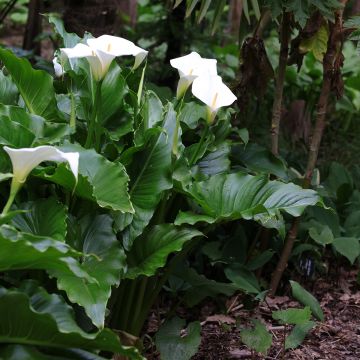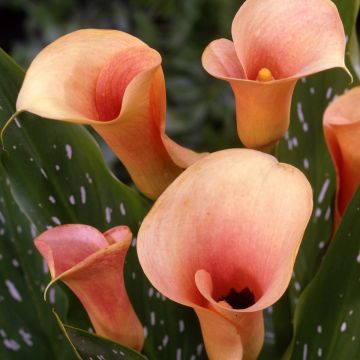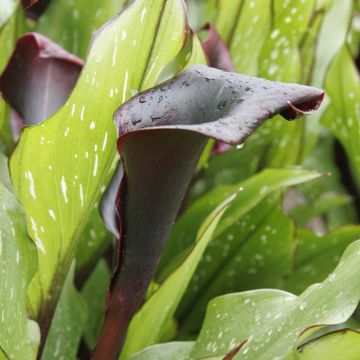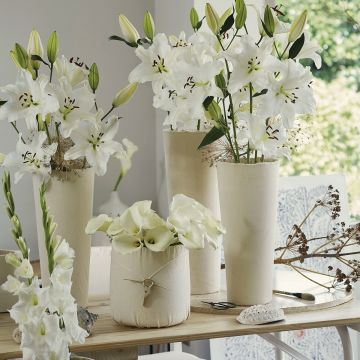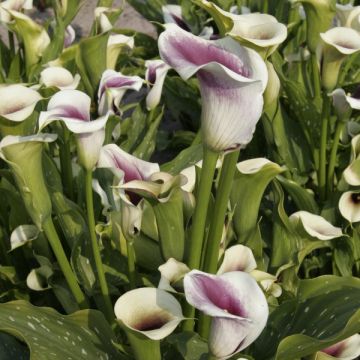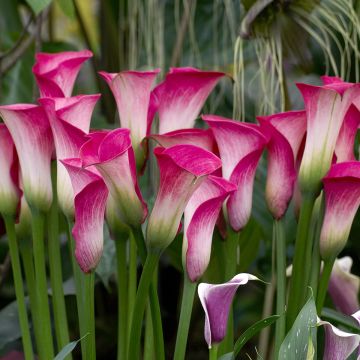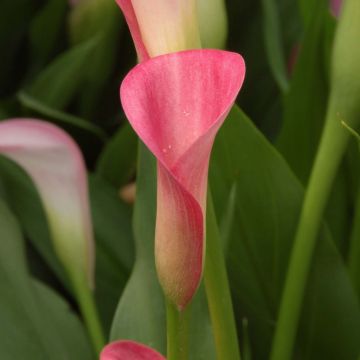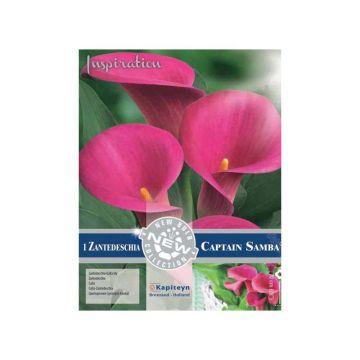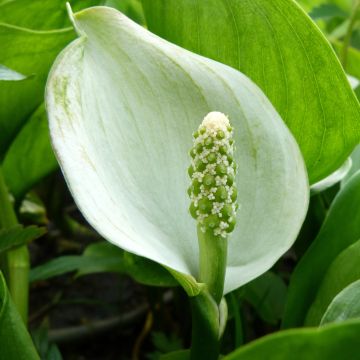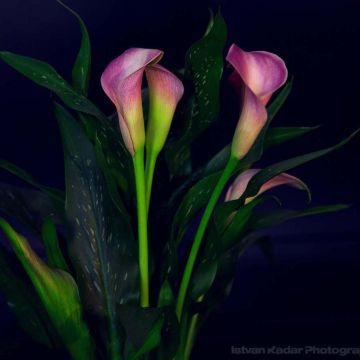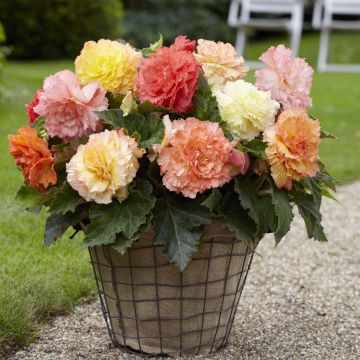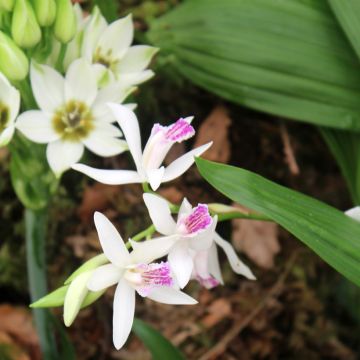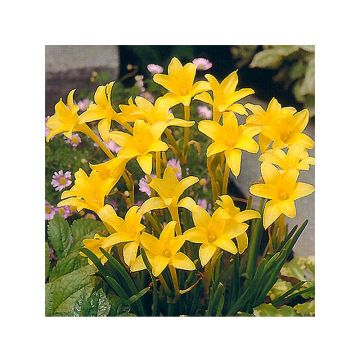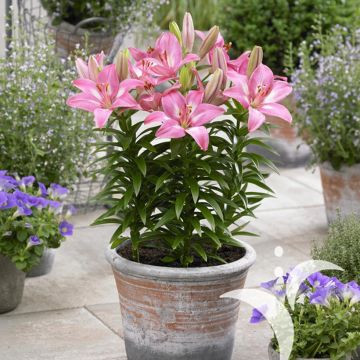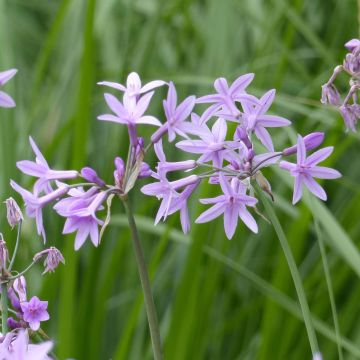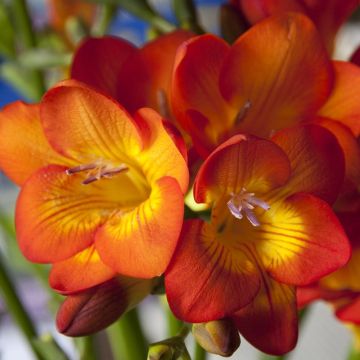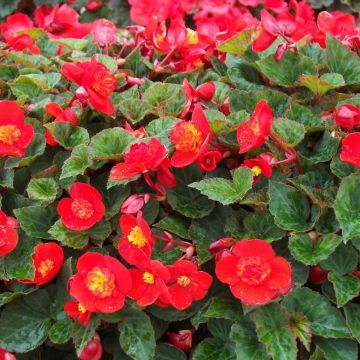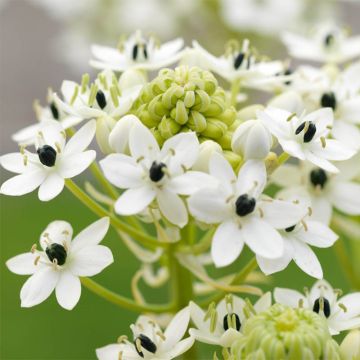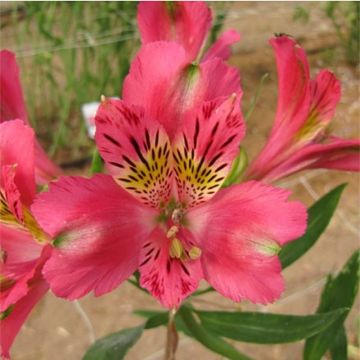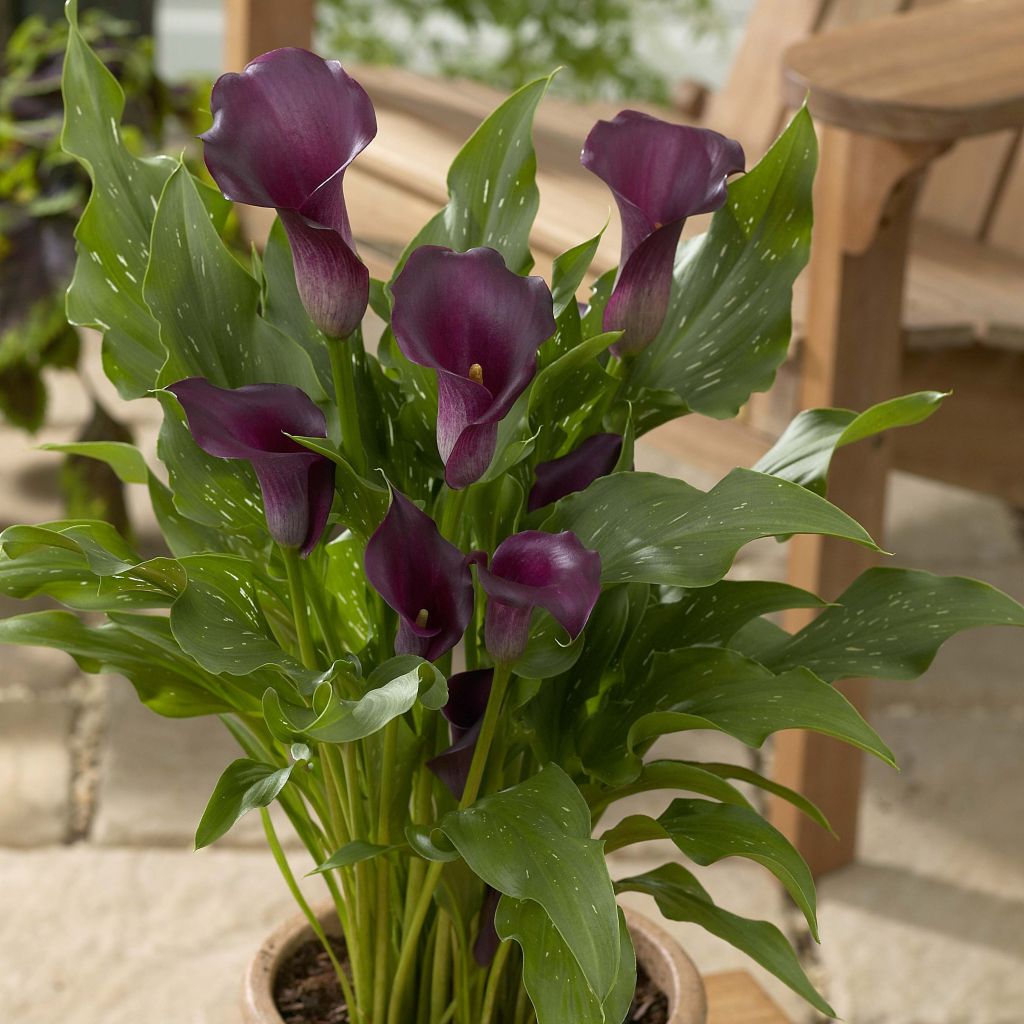

Arum ou Calla à fleurs violet sombre - Zantedeschia Captain Reno
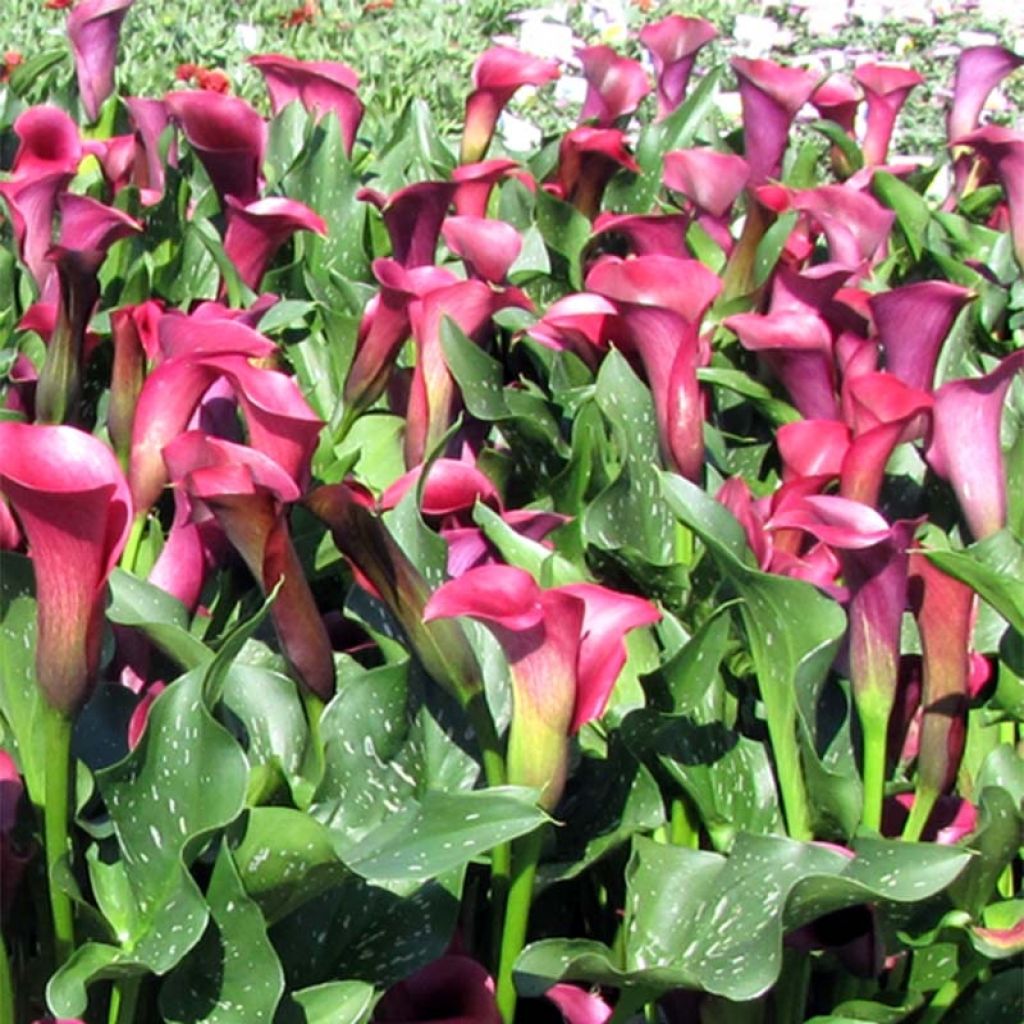

Arum ou Calla à fleurs violet sombre - Zantedeschia Captain Reno
Zantedeschia elliottiana Captain Reno - Calla Lily
Zantedeschia x elliottiana Captain Reno
Golden Calla Lily, Yellow Calla Lily
This item cannot be shipped to the selected country
Delivery charge from €5.90
More information
Schedule delivery date,
and select date in basket
This plant carries a 6 months recovery warranty
More information
We guarantee the quality of our plants for a full growing cycle, and will replace at our expense any plant that fails to recover under normal climatic and planting conditions.
From €5.90 for pickup delivery and €6.90 for home delivery
Express home delivery from €8.90.
Does this plant fit my garden?
Set up your Plantfit profile →
Description
The Arum or Calla 'Captain Reno', also known as Zantedeschia, is a variety of singular beauty with its dark violet spathe flowers with purple reflections! This stemless perennial forms a compact clump of large sagittate, undulate, dark green leaves marbled with white. It blooms abundantly from May to August, providing good cut flowers and embellishing gardens throughout the beautiful season. It is a plant that likes fresh to moist, well-drained, light and rich soils and a bright exposure without scorching sun. Very floriferous and well-furnished with beautiful dense foliage, it is an ornamental perennial that works wonders in a pot on a terrace or balcony. Not frost-hardy, heavily mulch in warm regions. Elsewhere, overwinter it in a frost-free room.
Zantedeschia 'Captain Reno' is one of the many hybrids that have been obtained by cross-breeding two main species native to Eastern and Southern Africa, Zantedeschia rehmannii and Zantedeschia elliottiana. 'Captain Reno' is a stemless species with large sagittate, undulate, dark green leaves marbled with transparent white. Medium-sized and compact in habit, it measures about 40cm (16in) tall and 50cm (20in) wide. Like other hybrids, this plant requires specific growing conditions to flower. The flower, characteristic of arums, produces a highly ornamental spathe, almost 10cm (4in) in diameter, hiding in its heart a golden yellow spadix. Its thick roots sink perpendicularly into the growing medium, which are fleshy and trailing rhizomes. In nature, this plant grows in marshes that generally dry out in summer, under hot climates all year round. Vegetation dries up, and the tuber enters a period of dormancy. This vegetative cycle must be strictly respected in cultivation. Florist's arums live for many years if the cyclic rest period is well respected.
Zantedeschia 'Captain Reno' is particularly suitable for pot cultivation, as long as it benefits from regular watering. It can also be planted in moist soil, near a water source, or even partially submerged, in less than 20cm (8in) of water in summer. Its exotic-looking vegetation will wonderfully accompany large ferns, sedges, and creeping Lysimachias in a humid and lush environment. Outside mild climate regions, dig up the rhizomes and overwinter them in a dry place at 10 °C, before replanting them next spring. Otherwise, mulch with a minimum of 10 to 20cm (4 to 8in).
Report an error about the product description
Zantedeschia elliottiana Captain Reno - Calla Lily in pictures
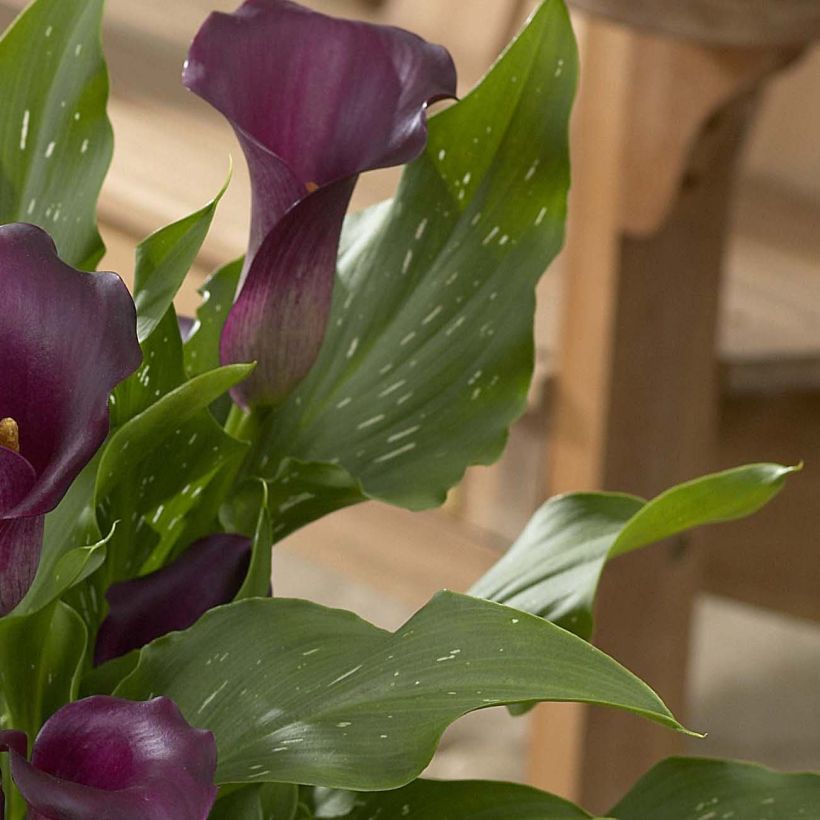

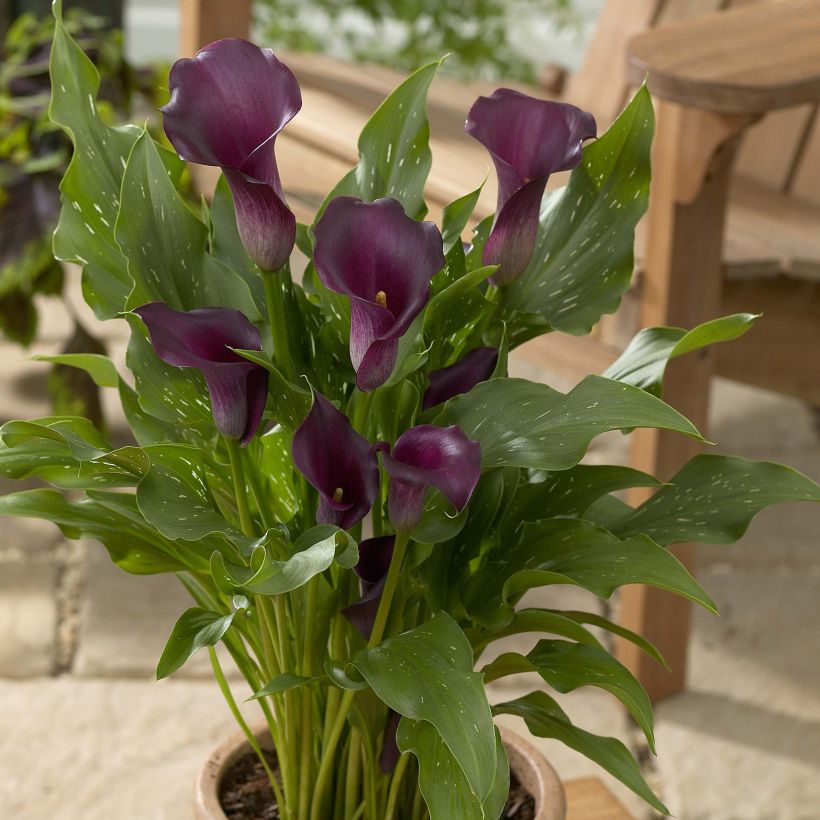

Plant habit
Flowering
Foliage
Botanical data
Zantedeschia
x elliottiana
Captain Reno
Araceae
Golden Calla Lily, Yellow Calla Lily
Cultivar or hybrid
Other Arums
Planting and care
Plant your Calla 'Captain Reno' bulbs from March to April, at a depth of 12cm (5in), spaced 15cm (6in) apart, in a moist location. Apply organic fertilizer at planting time and at least once a year. They can also be grown in large pots, but make sure to water them regularly to keep the soil moist, and fertilize every 2 months during the growing season. Mulch them at the first frost and protect them with bubble wrap, as they are not very hardy in northerly regions. In pots, store them during winter. They will form beautiful flowered clumps from June to August in a few years. You can cut back the foliage after the first frost.
Planting period
Intended location
Care
This item has not been reviewed yet - be the first to leave a review about it.
Bulbs to grow in pots
Haven't found what you were looking for?
Hardiness is the lowest winter temperature a plant can endure without suffering serious damage or even dying. However, hardiness is affected by location (a sheltered area, such as a patio), protection (winter cover) and soil type (hardiness is improved by well-drained soil).

Photo Sharing Terms & Conditions
In order to encourage gardeners to interact and share their experiences, Promesse de fleurs offers various media enabling content to be uploaded onto its Site - in particular via the ‘Photo sharing’ module.
The User agrees to refrain from:
- Posting any content that is illegal, prejudicial, insulting, racist, inciteful to hatred, revisionist, contrary to public decency, that infringes on privacy or on the privacy rights of third parties, in particular the publicity rights of persons and goods, intellectual property rights, or the right to privacy.
- Submitting content on behalf of a third party;
- Impersonate the identity of a third party and/or publish any personal information about a third party;
In general, the User undertakes to refrain from any unethical behaviour.
All Content (in particular text, comments, files, images, photos, videos, creative works, etc.), which may be subject to property or intellectual property rights, image or other private rights, shall remain the property of the User, subject to the limited rights granted by the terms of the licence granted by Promesse de fleurs as stated below. Users are at liberty to publish or not to publish such Content on the Site, notably via the ‘Photo Sharing’ facility, and accept that this Content shall be made public and freely accessible, notably on the Internet.
Users further acknowledge, undertake to have ,and guarantee that they hold all necessary rights and permissions to publish such material on the Site, in particular with regard to the legislation in force pertaining to any privacy, property, intellectual property, image, or contractual rights, or rights of any other nature. By publishing such Content on the Site, Users acknowledge accepting full liability as publishers of the Content within the meaning of the law, and grant Promesse de fleurs, free of charge, an inclusive, worldwide licence for the said Content for the entire duration of its publication, including all reproduction, representation, up/downloading, displaying, performing, transmission, and storage rights.
Users also grant permission for their name to be linked to the Content and accept that this link may not always be made available.
By engaging in posting material, Users consent to their Content becoming automatically accessible on the Internet, in particular on other sites and/or blogs and/or web pages of the Promesse de fleurs site, including in particular social pages and the Promesse de fleurs catalogue.
Users may secure the removal of entrusted content free of charge by issuing a simple request via our contact form.
The flowering period indicated on our website applies to countries and regions located in USDA zone 8 (France, the United Kingdom, Ireland, the Netherlands, etc.)
It will vary according to where you live:
- In zones 9 to 10 (Italy, Spain, Greece, etc.), flowering will occur about 2 to 4 weeks earlier.
- In zones 6 to 7 (Germany, Poland, Slovenia, and lower mountainous regions), flowering will be delayed by 2 to 3 weeks.
- In zone 5 (Central Europe, Scandinavia), blooming will be delayed by 3 to 5 weeks.
In temperate climates, pruning of spring-flowering shrubs (forsythia, spireas, etc.) should be done just after flowering.
Pruning of summer-flowering shrubs (Indian Lilac, Perovskia, etc.) can be done in winter or spring.
In cold regions as well as with frost-sensitive plants, avoid pruning too early when severe frosts may still occur.
The planting period indicated on our website applies to countries and regions located in USDA zone 8 (France, United Kingdom, Ireland, Netherlands).
It will vary according to where you live:
- In Mediterranean zones (Marseille, Madrid, Milan, etc.), autumn and winter are the best planting periods.
- In continental zones (Strasbourg, Munich, Vienna, etc.), delay planting by 2 to 3 weeks in spring and bring it forward by 2 to 4 weeks in autumn.
- In mountainous regions (the Alps, Pyrenees, Carpathians, etc.), it is best to plant in late spring (May-June) or late summer (August-September).
The harvesting period indicated on our website applies to countries and regions in USDA zone 8 (France, England, Ireland, the Netherlands).
In colder areas (Scandinavia, Poland, Austria...) fruit and vegetable harvests are likely to be delayed by 3-4 weeks.
In warmer areas (Italy, Spain, Greece, etc.), harvesting will probably take place earlier, depending on weather conditions.
The sowing periods indicated on our website apply to countries and regions within USDA Zone 8 (France, UK, Ireland, Netherlands).
In colder areas (Scandinavia, Poland, Austria...), delay any outdoor sowing by 3-4 weeks, or sow under glass.
In warmer climes (Italy, Spain, Greece, etc.), bring outdoor sowing forward by a few weeks.

































